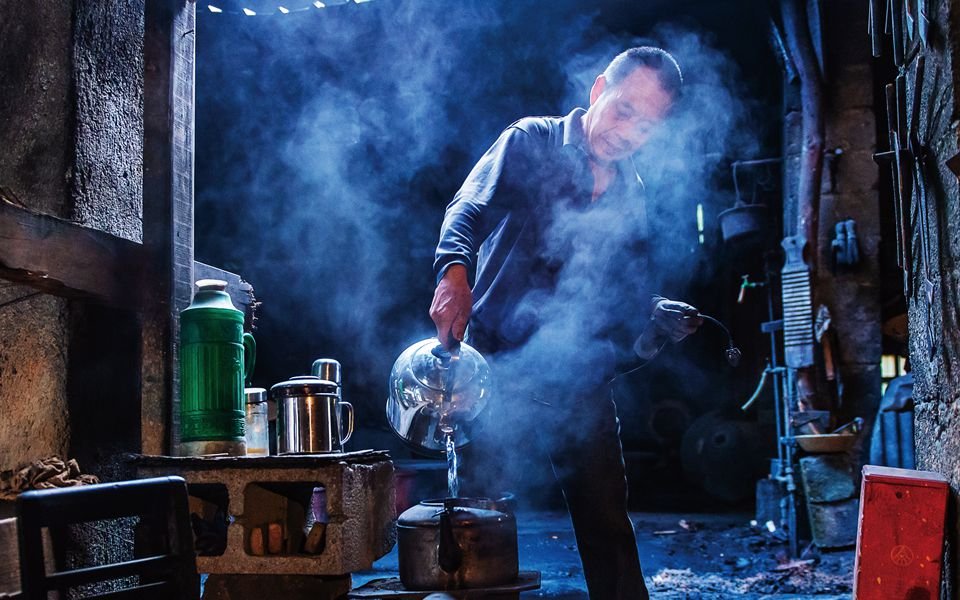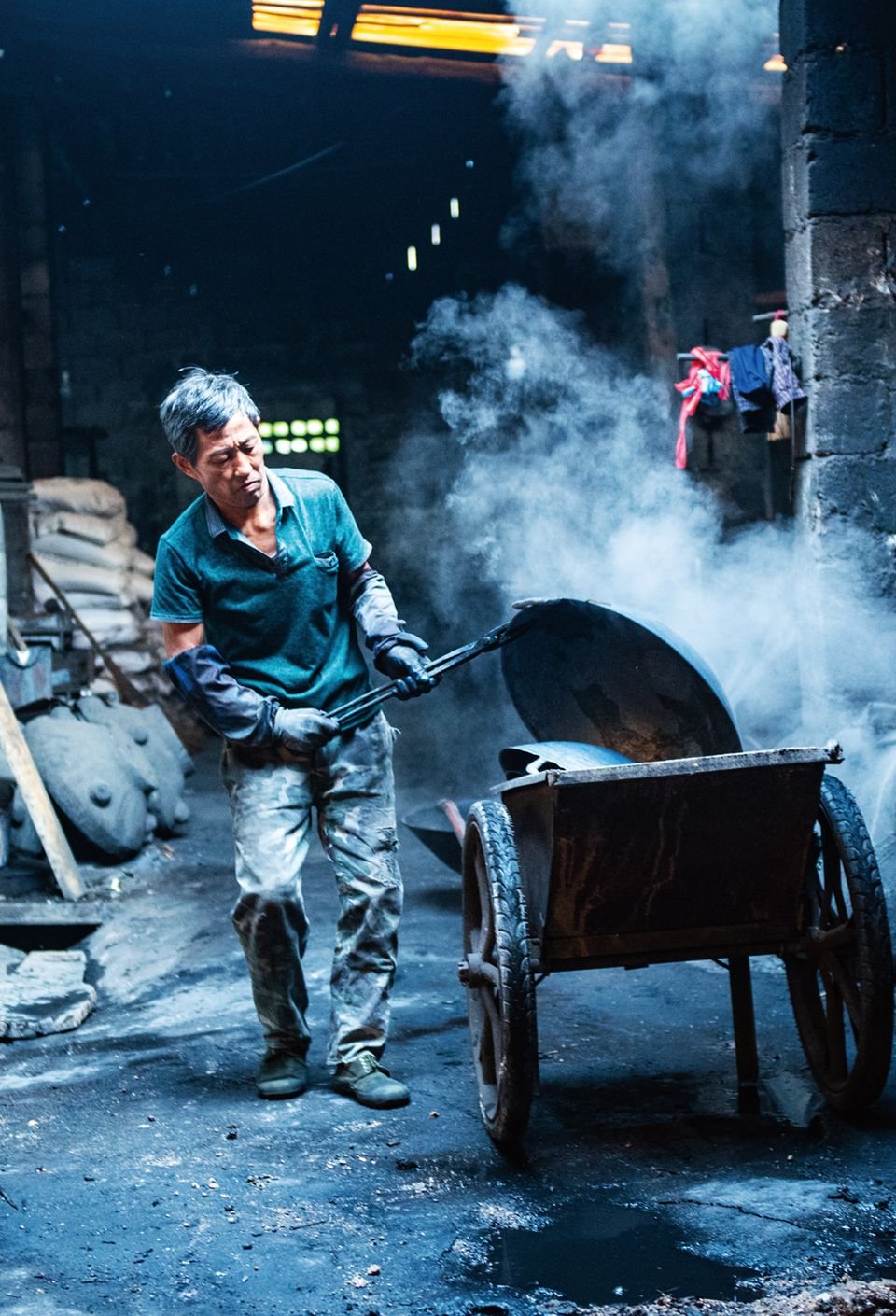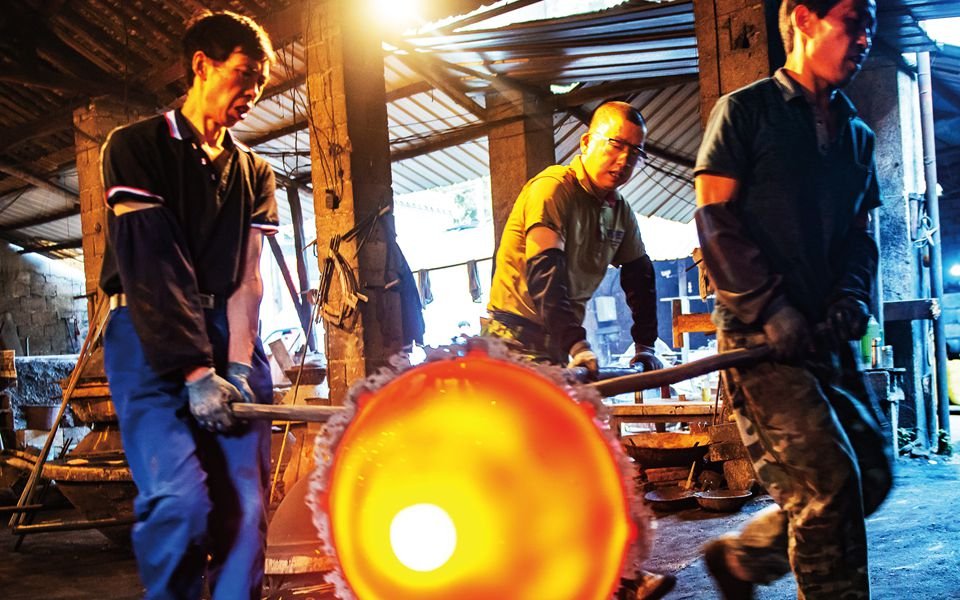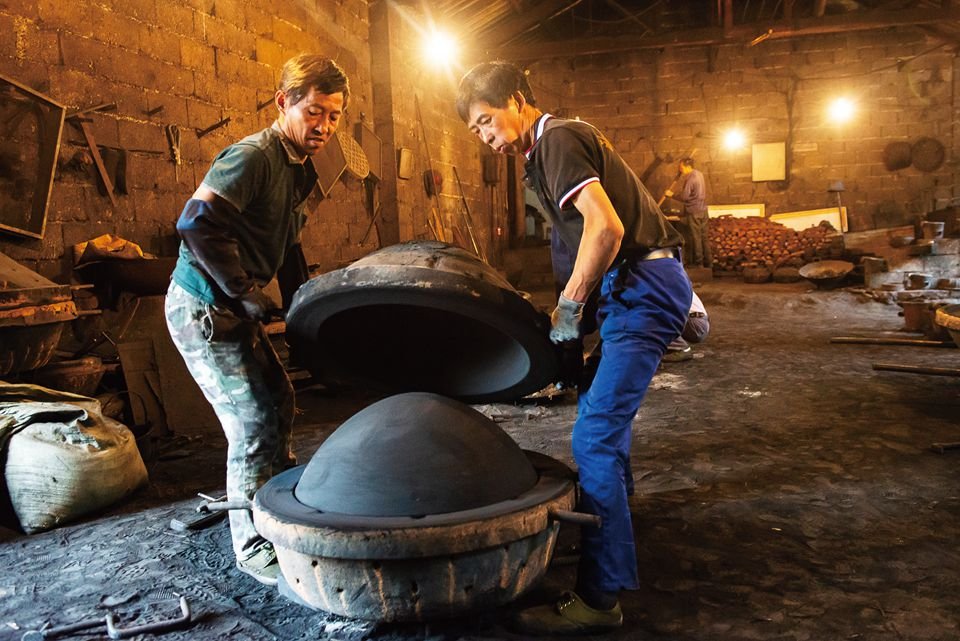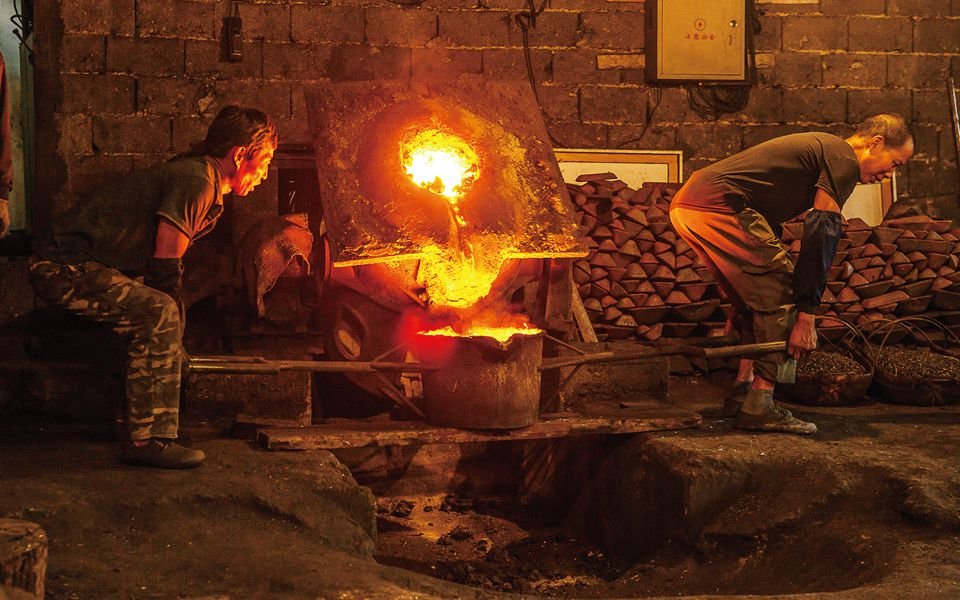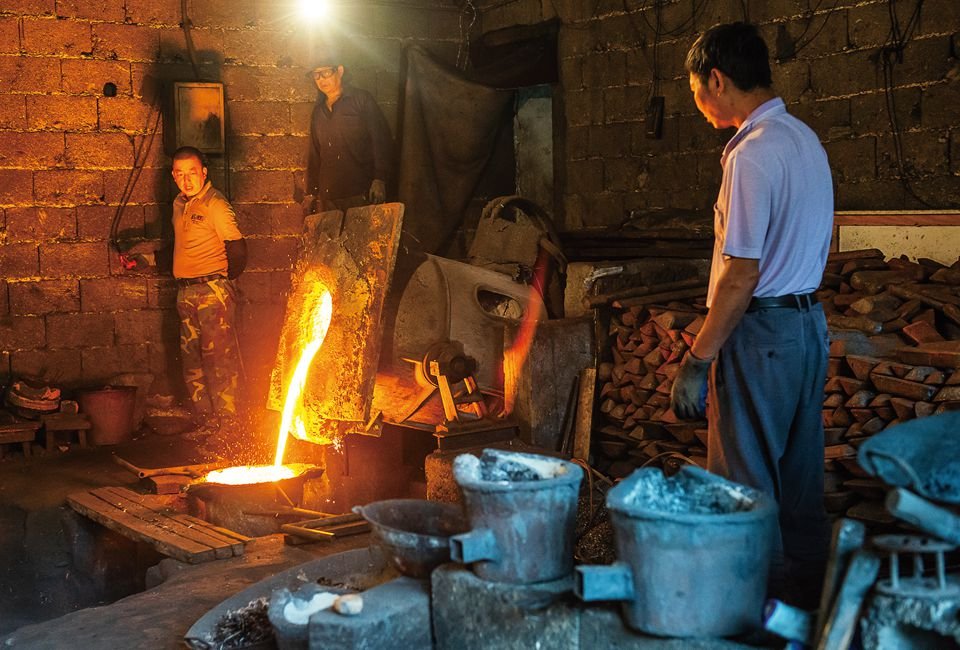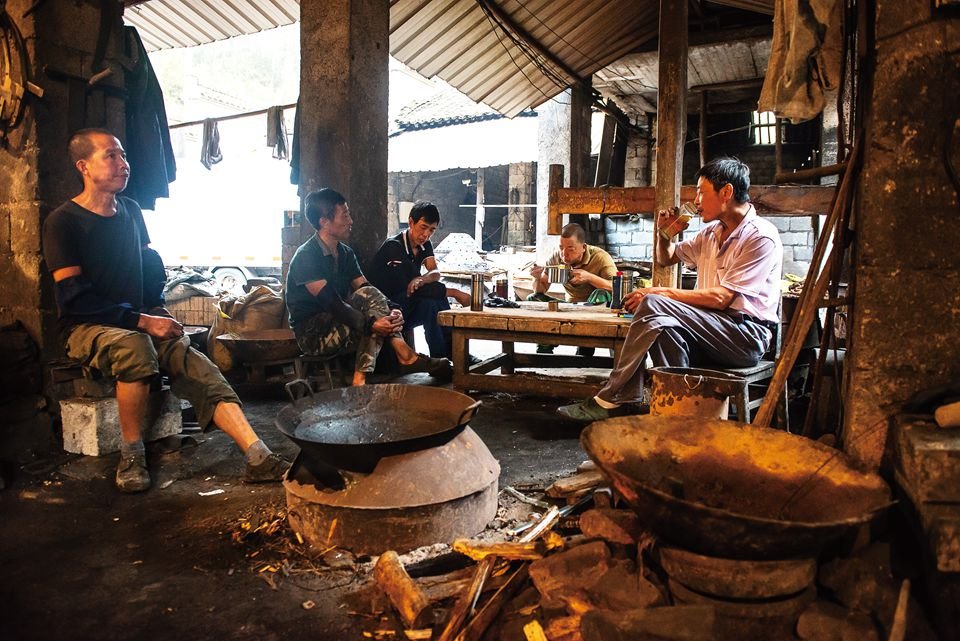China’s iconic cooking vessel is forged in a symphony of fire and steam
Lying in the shadow of the majestic Huangshan Mountain, the village of Shichuan in Anhui province is renowned for its bucolic stone bridges and temples. But don’t be fooled by its sleepy appearance: The village awakens to the firing of dozens of furnaces before 6 a.m. each morning.
Thrift drives this early start: Electricity is discounted before 8 a.m., an essential cost-cutter for these family-run foundries that need to generate a lot of heat—melting iron requires temperatures of over 1,000 degrees Celsius. Perhaps it is this mix of diligence and economy that has allowed Shichuan’s ancient wok-casting method to persist for centuries in the face of mass-produced competition.
Occasionally touted as “China’s fifth great invention,” cast iron’s fiery origins have been traced by archeologists back to the sixth century BCE. Due to its importance in weaponry, the government held a monopoly on iron’s sale from the Spring and Autumn period (770 – 476 BCE) through to the Eastern Han dynasty (25 – 220 CE). Since then, iron cooking woks have been recorded in the kitchens of the nobility—the seventh century’s female emperor Wu Zetian (武则天) was especially fond of stir-fries—but weren’t readily available to commoners until the Song dynasty (960 – 1279). It’s no coincidence that the Song was also a culinary golden age in Chinese history, when the first restaurants appeared and people began dining out all night long.
Characterized by rounded bottoms and thin sides, which retain heat and allow food to be stirred easily, woks have become synonymous with Chinese cuisine. In 1999, Chinese-American author Grace Young coined the term wok hei (镬气), or “breath of the wok,” an elusive quality that supposedly harmonizes the flavors in Chinese cooking. The workings of one of Shichuan’s foundries can feel similarly mysterious—long experience allows workers to add water to the clay molds based on sheer instinct for the day’s temperature and humidity, and protective gear feels irrelevant when these craftsmen expertly dart around their craters of fire, molten iron, and steam.
Photographs by Meng Qingchun (孟庆春)
All In a Day’s Wok is a story from our issue, “Dawn of the Debt.” To read the entire issue, become a subscriber and receive the full magazine.







